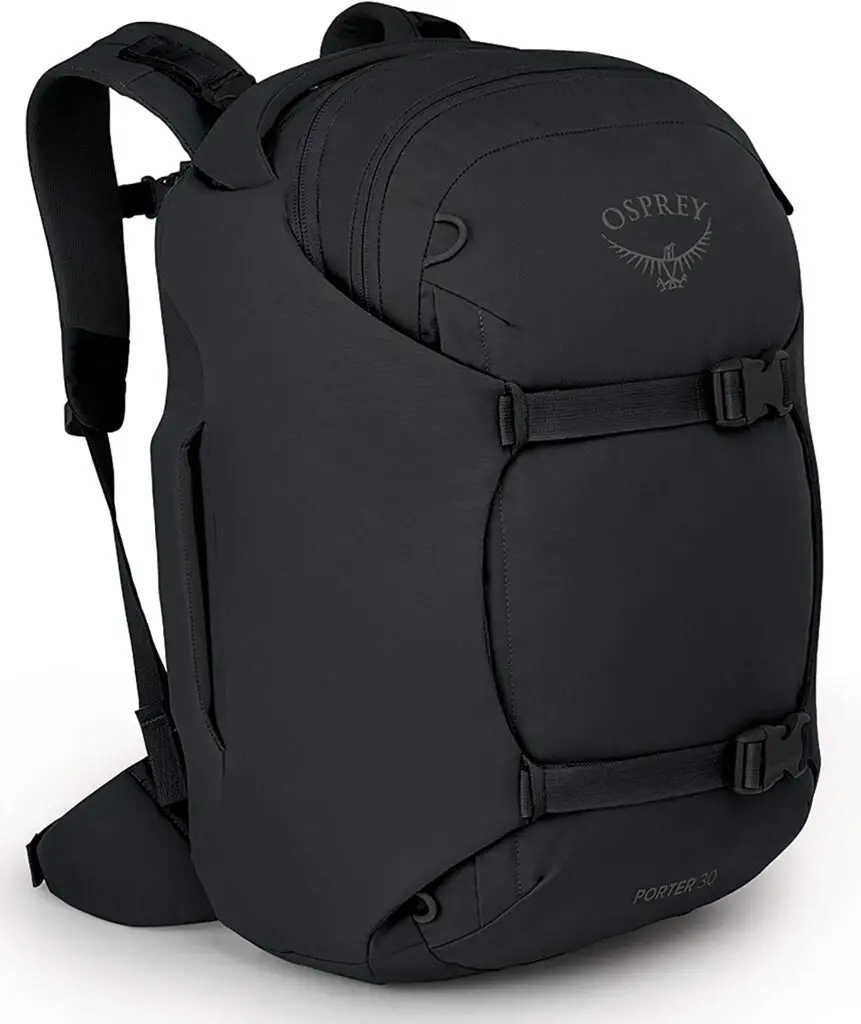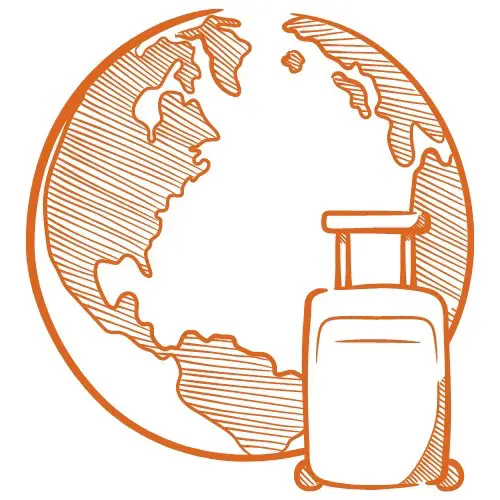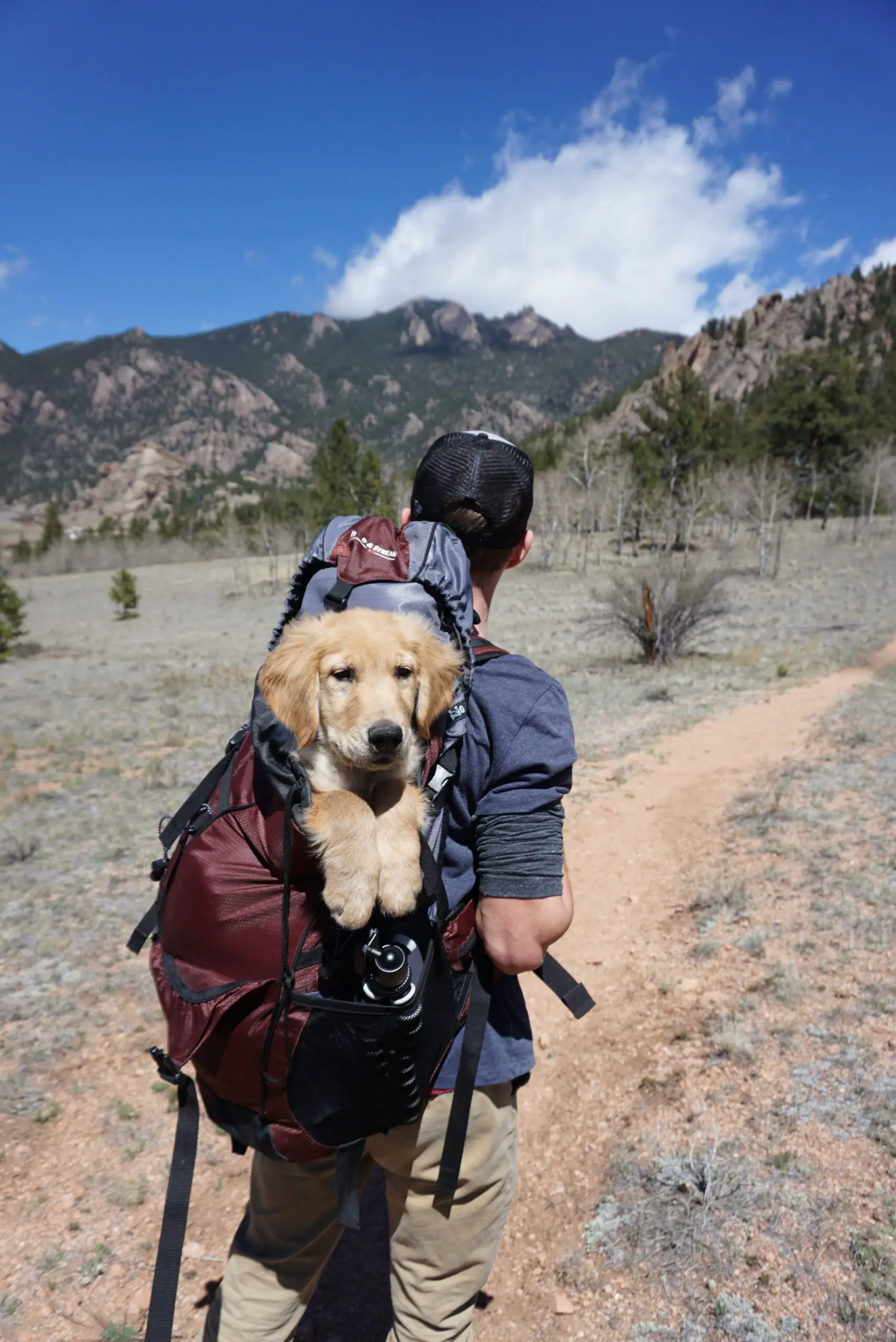You’ve got all your essentials ready to go for a day of backpacking, and you couldn’t be more excited; you’re even bringing your dog along for the adventure. As the day progresses, though, your back begins aching more and more. By midafternoon, you’re dealing with so much pain and stiffness that sadly, you just want to go home and rest. Is this kind of back pain preventable while backpacking?
You can indeed avoid back pain while backpacking, and it’s not all about what you pack and how much. Everything from choosing the right footwear and backpack to having trekking poles and stretching before you go can prevent your pain.
Trekking poles? Are those really necessary? What about stretching? If you’re curious at all about how to reduce your back pain while backpacking, then you don’t want to miss this article. We’ll answer all the painfully important questions and more.
Related article: What is a rucksack bag?
6 Steps to Avoiding Back Pain While Backpacking
What you wear, the way you carry yourself, and the instruments you use to walk could all be contributing to that never-ending pain you’re feeling. If backaches plague you, try these methods and tips.
1. Watch Your Posture
If you already have poor posture, then lugging around a backpack all day is going to exacerbate the problem. When people talk about having proper posture, they always refer to a stick-straight spine – but that’s not quite right. Instead, you want to achieve what’s known as a “neutral spine.”
Keeping a neutral spine holds the pubic symphysis and the superior iliac parts of the spine in straight alignment. A neutral spine also accommodates for the slight curvature present in the spine when your posture is correct.
You might be able to practice better posture when you’re at home, but as soon as you put your backpack on, you feel like you’re hunching under its weight. Being aware of improper posture is the first step to changing it. Getting a new backpack won’t hurt either, but we’ll get to that.
2. Choose the Right Footwear
Although you might not think it, the shoes you wear can play a significant role in how sore your back will be at the end of your backpacking session. When you walk on hard surfaces like packed dirt, rocks, and the like, the shockwaves from the impact can reverberate from your feet to your spine. If you have shoes with good support, they will cushion the impact so that it doesn’t affect your back as much.
The older your shoes are, the greater the likelihood you’ll have back pain. With time and use, shoes wear down, and their support is not as effective as it once was. Also, you have to make sure you have the right footwear for the job. Those old ratty sneakers will not do. You want hiking boots for backpacking.
3. Trekking Poles Are Your Friend
You’ve probably seen some hikers and backpackers carry trekking poles. These also go by the names walking poles or hiking poles. They kind of look like ski poles and are made primarily of metal. Trekking poles have wrist straps, thick rubber-covered handles, and bottom baskets. They’re meant to aide in your stability and help you achieve a walking rhythm.
In short, they’re good to have. They’re so good that a 2007 study from a medical sports publication found that those who used trekking poles while backpacking had less back and joint pain. A trekking pole is certainly worth trying if you’re not already carrying one.
4. Invest in a Better Backpack
You may have chosen your backpack because it was big and had lots of pockets and zippers for stashing all your stuff. While that’s good criteria, you need to be a little choosier in which backpack you carry when hiking. Use your weight, the length of your torso, and the size of your sternum, shoulders, and hips as guideposts in finding your next backpack.
This is a great choice for an all-around backpack!
Osprey Porter 30 Travel Backpack

It shouldn’t be too big to the point where it’s a burden. You also don’t want a backpack that puts pressure on your back or shoulders before you’ve even filled it. We recommend you try on several backpacks until you find one that feels like a more natural fit.
5. Know How to Distribute Weight in Your Backpack
Now that you have a backpack that fits, you need to fill it for your trek. For your first few hikes especially, you’ll probably be tempted to overpack. After all, what if someone trips and hurts themselves? You need bandages! What if you get stranded and have to live off your supplies for a few days? You have to bring plenty of water, snacks, and a sleeping bag.
With time, you’ll learn which items are essential and which ones you can leave at home. No matter what you choose to bring, you have to know how to pack it. Dumping it all in the backpack can put a strain on certain parts of your back that are bearing the most weight.
Instead, as you pack, start with your weightiest gear and equipment. Keep these items near the center so they brace against your back. This may seem like it’ll hurt you more, but it won’t; packing this way creates the stability that can lead to less back pain. Continue loading up items by weight, making sure everything isn’t piled to one side or in the center.
6. Some Pain-Reducing Exercises
Just like you shouldn’t exercise without stretching first, don’t go for a rigorous backpacking session without doing something for your back. Perhaps you try a few yoga poses at home before you leave. Maybe you prep your muscles with a few common stretches. Whatever you do, limber up. Then, in between backpacking sessions, you might choose to focus on your back at the gym to strengthen it.
The Definitive 5 Steps to Treating Back Pain From a Backpacking Session
If you or a fellow party member are complaining of a sore back by the end of the day, you’re going to want to treat it quickly. While we do recommend you reread the above tips to see where you went wrong, pain relief is at the top of your priority list right now. And rightfully so.
If your back is aching something fierce, here’s how you can relieve it.
1. Follow the RICE Technique
If you’ve never heard of it before, the RICE Technique stands for resting the area, using ice where it hurts, compressing the injury with wraps or bandages, and elevating it. For the minor aches and pains that can arise while backpacking, sometimes the RICE Technique is all you need.
2. Receive Hydrotherapy
Your doctor or another medical professional can administer hydrotherapy. This is a treatment that uses both hot packs and ice packs on the back to alleviate pain. In a pinch, you can mimic hydrotherapy at home with good results.
3. Take Medication
Over-the-counter nonsteroidal anti-inflammatory drugs or NSAIDs may be able to relieve your pain. If you find the pain persists even with these meds and you’re so uncomfortable that it’s reducing your quality of life, see your doctor. They can put you on a prescription painkiller for your back.
4. Get a Medical Massage
Whether it’s a sports or deep-tissue massage, a medical massage by a trained masseuse will trigger and target your pressure points to give you lasting relief. If you happen to know anyone at home with massage skills, you can save yourself the time and money and get a rub-down from a loved one.
5. See a Chiropractor
If your back pain extends to the tissue, a chiropractor can help. Through a series of techniques involving their hands and medical tables and other devices, a chiropractor can realign the spine and promote healing to damaged tissue. Although you might not feel relief during your very first session, within a few visits, your back should feel a lot better.
A Note on More Serious Back Pain…
If the above measures haven’t put a significant dent in your back pain, then it may be time to sit down with your doctor for a fuller diagnosis. It’s possible you have severe damage or even a disease that affects your back. In these cases, you’d almost certainly have to discontinue backpacking until a professional can address your health problems could and treat them properly.
While stronger medications are sometimes the solution, in some instances, you might need surgery. You may want to backpack again someday, but you’d first need your doctor’s permission. Before you can get to that point, you’d probably have to undergo weeks or months of physical therapy.
The best thing we can recommend is not to ignore your back pain. The pain will likely only get worse. See your doctor before that happens.
Back Pain While Backpacking – Conclusion
Back pain can range from mildly uncomfortable to absolutely debilitating. If you’re a backpacker, even a bit of back pain can quickly ruin your day. Chances are, there are a few things you’re doing that could be exacerbating your pain.
For instance, if you’re wearing old shoes, your back will probably hurt. The same is true if you’re not using a trekking pole, your backpack is too big, or you overpacked your bag. While there are many ways to treat common back pain, listen to your body. If you sense something more serious is going on, don’t hesitate to see your doctor. Good luck!

